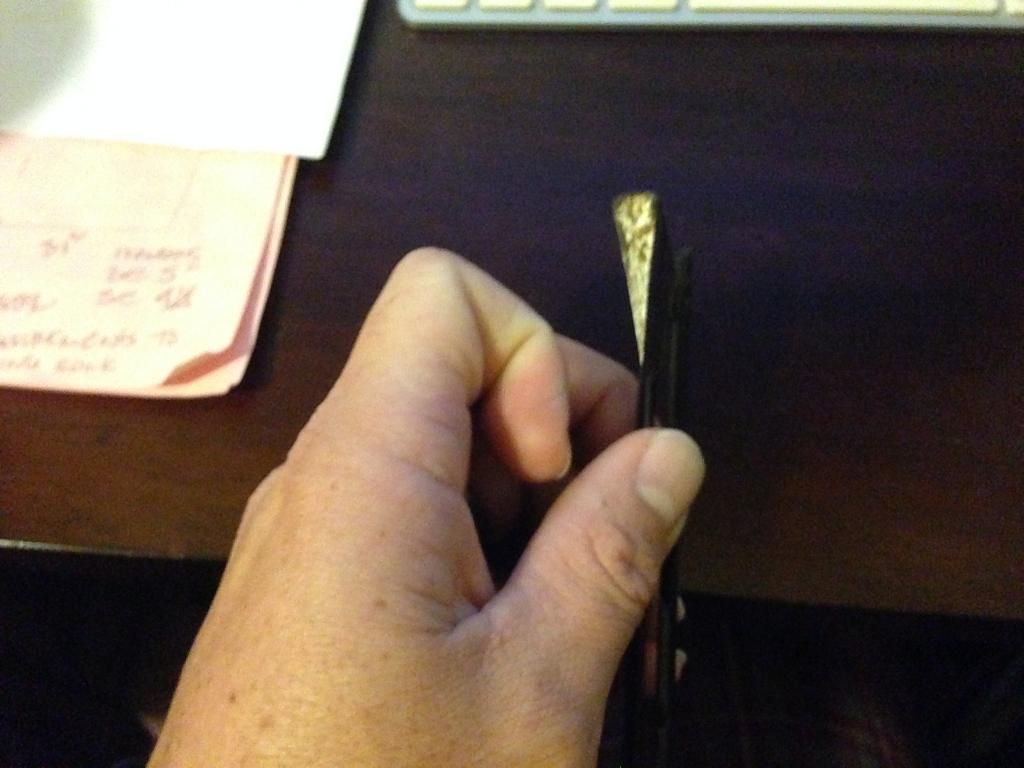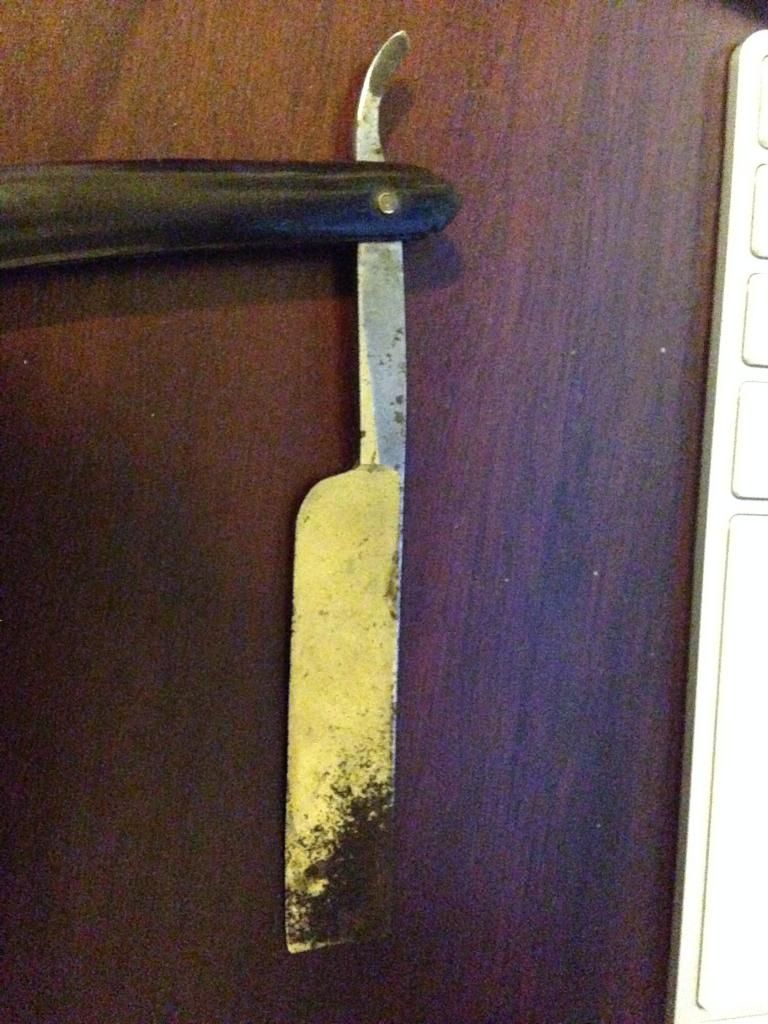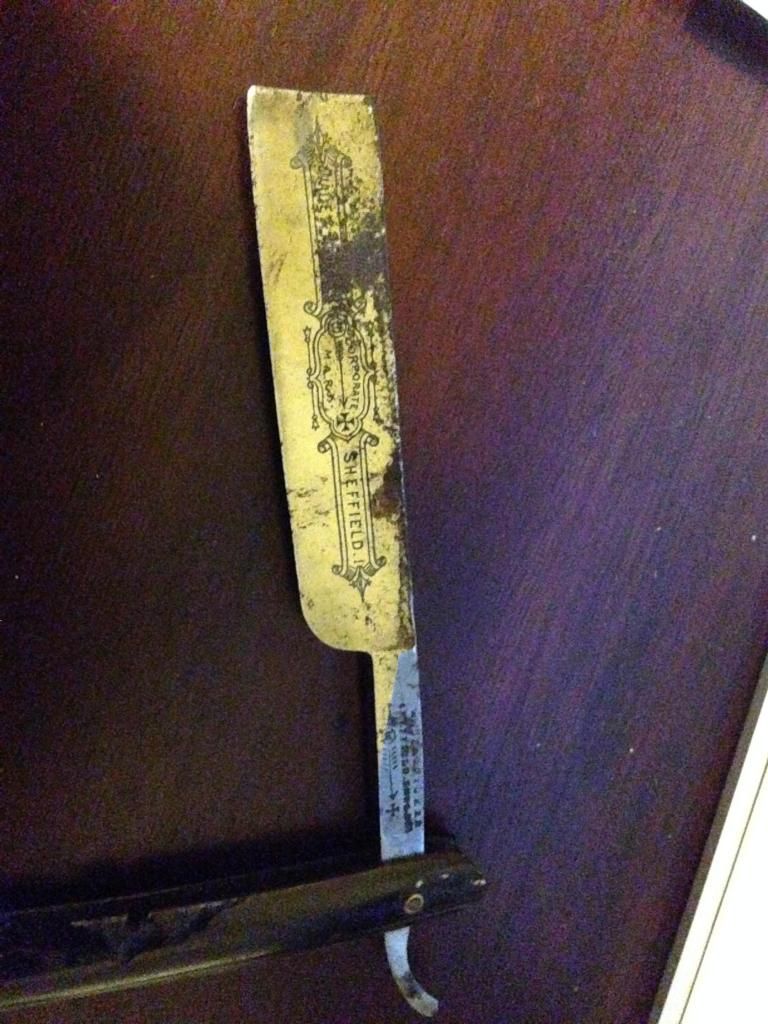Results 1 to 10 of 16
Thread: Wade and Butcher near wedge
Threaded View
-
01-14-2015, 01:12 AM #1
 Wade and Butcher near wedge
Wade and Butcher near wedge
Found this on the bay. Just looking for suggestions on what techniques to use on something with this level of rust. I would like to retain as much as the etch as possible. My intention for this straight is to restore it to shave ready but not a full restoration. Ideally I get rid of all rust and most of the tarnishing and leave whatever pitting that doesn't effect the usability of the blade. I plan on trying things on other straights first to get a good feel for what effects each technique will have as I don't want to cut my teeth on something like this. I have been reading the media tumbler thread and that looks appealing though it doesn't address the rust and pitting. I have also been reading a lot of the hand sanding stuff and was wondering it there was a good way to keep from dishing out or rounding off things. I figure good use of rubber or cork as a backer instead of a thumb or finger. I guess just mostly wondering what ways you more seasoned vets would use in order to bring it back without taking away from the character or its ability to shave.
thanks in advance,
John
http://
http://
http://


 8Likes
8Likes LinkBack URL
LinkBack URL About LinkBacks
About LinkBacks






 Reply With Quote
Reply With Quote